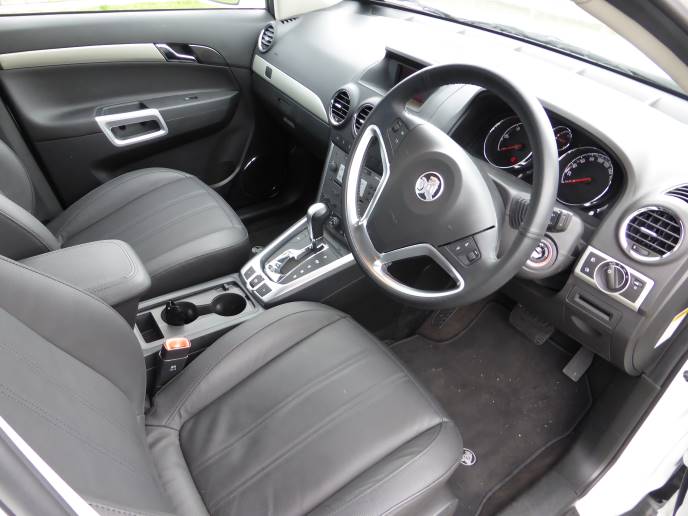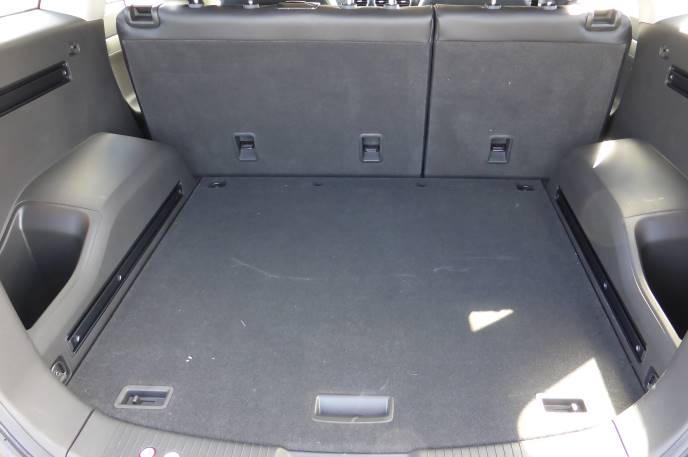Holden Captiva LTZ diesel 2014 new car review
It’s a testament to how progressive the Captiva was when it first came out.

It feels a bit weird putting 2014 in this review because the Captiva 5 started life in 2006 and has only had a couple of minor upgrades during the last 8 years. We first drove it in 2007. It’s a testament to how progressive the Captiva was when it first came out.
- Holds its own against newer competitors
- Four-wheel drive surefootedness
- Dated
- No Bluetooth audio streaming, only phone calls
We get to jump in and out of new cars every week and they usually progress over time, but looking back at my photos from 2007 it is obvious that the Captiva is stuck in a time warp. The steering wheel and most of the dashboard and central binnacle are exactly the same, as are the instrument wands and that orange screen that looked dated when it first came out. In fact, it’s bordering on retro, which means it should be trendy very soon.
Inside and out
Of course, new features have been added like Bluetooth phone integration, keyless entry, hill start assist, hill descent mode, a revised air conditioning section with dual-zone climate control, rain-sensing wipers, parking sensors front and rear, heated seats, and 19-inch wheels rather than 18-inch wheels. But if you’ve owned a Captiva before you’ll feel a sense of comfortable familiarity.
The reason the Captiva still sells like it’s the newest thing in the world is because the base model LT starts at under 37 grand, and there’s not a whole lot of competition. If you want the LTZ, though, you’ll need to fork out $46,490 and therefore it’s good to look at the alternatives.
The Nissan Qashqai TS is probably the closest and it’s both dynamically a bit better and has some better interior features, for over $3500 less. However, it isn’t a four-wheel drive, and the seating isn’t leather.
In the Captiva you don’t have to put up with the slightly irritating surging CVT gearbox that the Qashqai comes with; you get Holden’s trusty 6-speed automatic ‘box with Active Select (lets you change gears yourself) and Active Shift Control (analyses your driving and adjusts change up/down points as necessary). It does the job well.
On the road
I took the Captiva from Auckland to Napier and back and achieved 8.7l/100km on the way there and 8.6l/100km on the way back; Holden quotes an average of 8.2l/100km for combined (city/rural) driving. I had a loaded vehicle and didn’t spare the horses.
The 2.2-litre 135kW 4-cylinder turbo diesel engine isn’t that noisy (at least, not compared to the Ford Ranger I swapped it for), and you’ve got the benefit of four-wheel drive when needed. The diesel delivers a good dollop of 400Nm torque but with a fully loaded car could only just maintain 100kph up some of the longer hills on the Napier-Taupo road.
I always try to leave when there’s no traffic around so that I can get a good, uninterrupted run across the hills, and I achieved that. The Captiva’s suspension was much better than, for example, the Renault Koleos (read review here) which I drove a couple of weeks ago. There were no complaints from my passenger of it feeling like a listing ship despite some fairly spirited cornering.
There is the whole suit of safety features including 4-channel antilock braking, active rollover protection, brake assist, electronic brakeforce distribution, traction control, self-levelling suspension and six airbags. It scores 5 stars in the ANCAP crash test.
Overall
Wrapping it all up, there are some elements on the interior that really date the Captiva. The exterior of the vehicle is fine, but you don’t spend a lot of time looking at, or interacting with, that. The layout of the buttons on the dashboard is a bit odd and they’re not backlit, therefore you can’t see them when it’s dark.
Having said that, though, if you want a medium-sized SUV with a four-wheel drive powertrain that will tow 1700kg, has a decent-sized boot (430 litres) and comes with a full-size spare wheel, then the Captiva 5 should be on your list of potential vehicles.
Note: This was reviewed as a new vehicle.
Image gallery
Also consider





